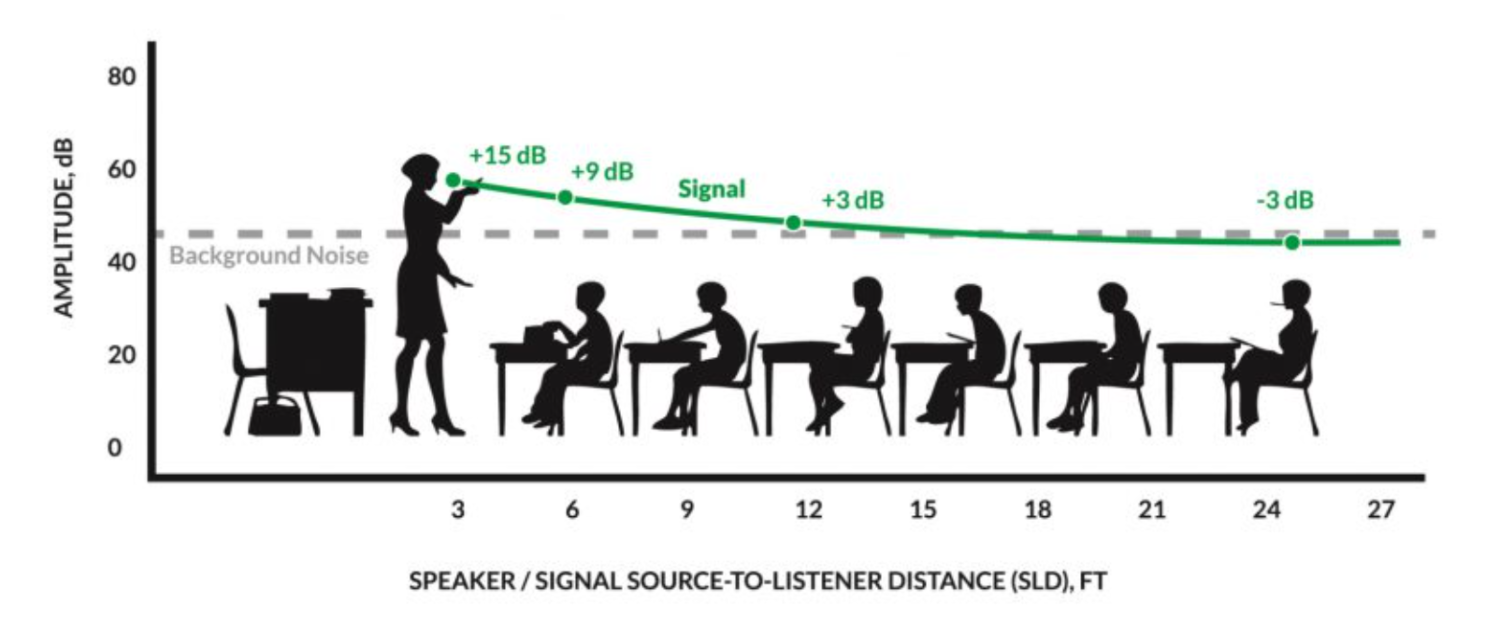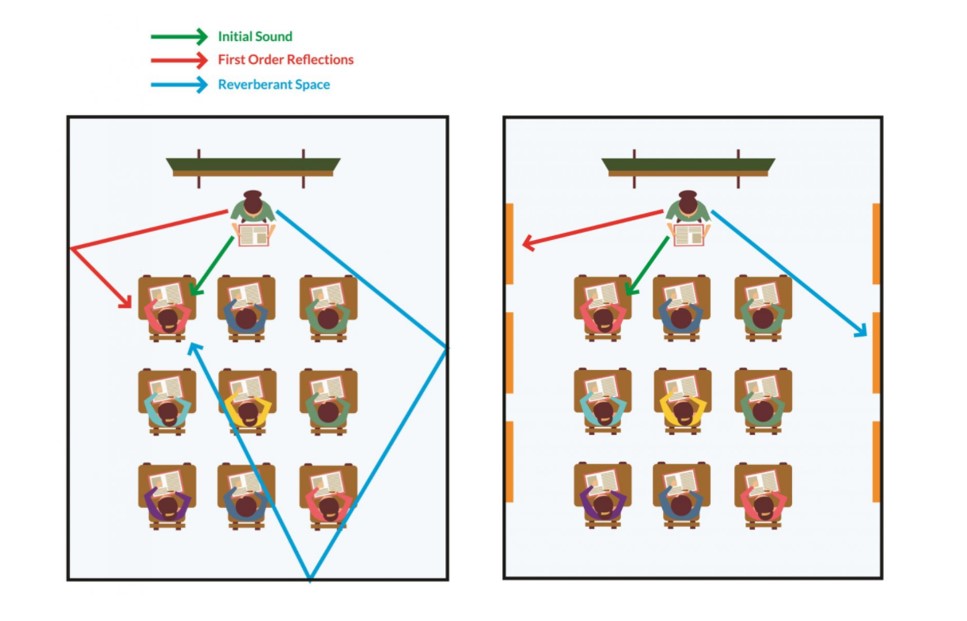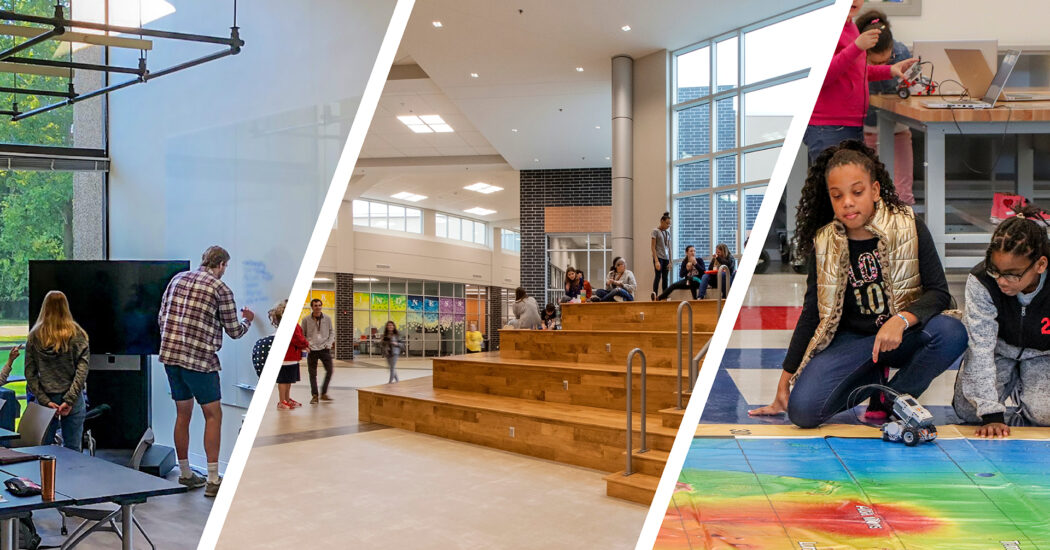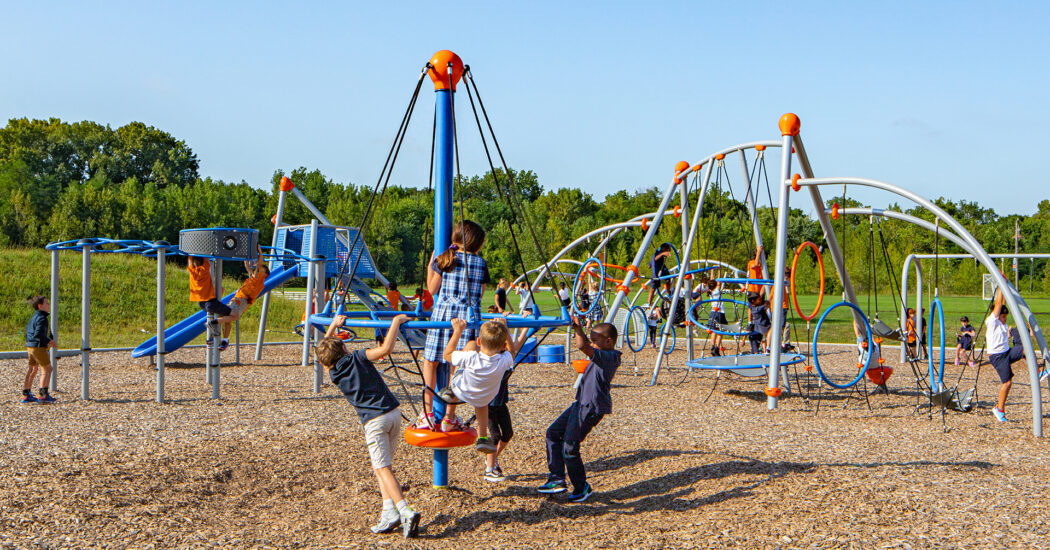Designing K-12 Education Spaces for Student Mental and Emotional Wellbeing | Part 2
-
Category
Studio-K12, Innovation -
Posted By
Karen Gillmore -
Posted On
May 06, 2021
Acoustical, Lighting, and Building System Considerations
In the first of this two-part series exploring building design’s impact on student mental and emotional health, we discussed how the design of a space, its furnishings, and the types of visual elements it uses impact how students feel.
But there are a variety of additional building aspects that students can’t see or may not be conscious of that significantly impact their connection to a space and how they function within it.
[Read Part 1 of the Series Here]
In this article, we’ll discuss the last three of the seven design themes that effect wellbeing and sense of place:
- Freedom-Control
- Nature
- Materials
- Art
- Acoustics
- Light
- Air Quality & Thermal Comfort
Acoustics
Did you know students can miss 25 percent of words their teacher says due to substandard acoustics in the classroom? In addition, environments that are too noisy can contribute to a 2/3 productivity loss for students.
The way sound travels (and doesn’t travel) in a classroom is critical to students’ ability to learn and focus. It affects students physiologically, psychologically, cognitively, and behaviorally.



Due to the varying level of sound and the way it is traveling in the room, students hear the teacher in different ways. In the charts above, you can see that depending where in the room a student is seated—as well as factors such as the location of the room in the school, the shape and size of the room, the height of the ceilings, the materials used (soft vs. hard), and the sound barriers between mechanical systems—affect what students hear and understand.


Media Center at West Lafayette Intermediate School | Music Room at Slate Run Elementary School
For example, in the left image above, high ceilings, carpet, and soft furniture help to create a quiet environment in a media center where you do not want sound to travel. In the image to the right, lowered ceilings with acoustical panels help to contain sound in this music room for better hearing by all students.
Light
The type and amount of light in a space has a direct impact on students’ mood and productivity. Daylight works with the body’s circadian rhythm and can lead to improved cognitive ability, reduced eye strain, and even reduced headaches. In fact, a study by Heschong Mahone Group demonstrated a 25 percent improvement in standardized test scores with exposure to natural light.


LaPorte Intermediate School | Butler College of Education
You may be thinking of the interior classrooms in your building that simply don’t have access to windows—how can you bring in natural light to these spaces? Advances in lighting technology allow us to mimic the color temperature of natural light through artificial light sources. Daylight harvesting can also bring natural light into a space that otherwise wouldn’t have any. One way we have achieved this is through a light tube that brings daylight from the roof down through the ceiling of the classroom.
Certain steps do often need to be taken to mitigate glare from natural light, as well as unwanted heat gain. When building a new school or going through significant renovations, building orientation and window placement can optimize utilization of sunlight. Sun shades and window glazing also help mitigate potential negative side effects of natural light. Some artificial lighting systems can also be programmed to work with natural light, brightening or dimming the lights in a room as the level of light entering the windows changes throughout the day.
Air Quality & Thermal Comfort
COVID-19 has emphasized the need for effective, high-efficiency HVAC systems in public buildings like schools and healthcare facilities. The ability to clean indoor air and bring in greater levels of fresh outdoor air will likely be an ongoing concern to keep occupants healthy.
In addition to mitigating the spread of illness among students, improved indoor air quality actually improves the ability to think and perform. A 2015 study led by the Harvard T.H. Chan School of Public Health determined that cognitive function more than doubled in environments with high efficiency HVAC systems (meaning increased ventilation rates and decreased CO2 and volatile organic compounds [VOCs]). Participants demonstrated significantly higher rates of information usage, strategic abilities, and crisis response with improved indoor air quality.
A few specific recommendations to improve indoor air quality based on ASHRAE guidelines:
- Increase total supply to six air changes per hour where possible
- Implement pre- and post-occupancy ventilation (“flushing” or “purging” the building)
- Increase outside air delivery to meet ASHRAE 62.1 Standard
- Ensure all exhaust systems are functional
- Increase efficiency of air handling filters if possible (MERV 13 is preferred)
- Balance energy efficiency measures with healthy practices
Read the first part of this series, focused on building design aspects of school facilities that impact mental and emotional wellbeing.







